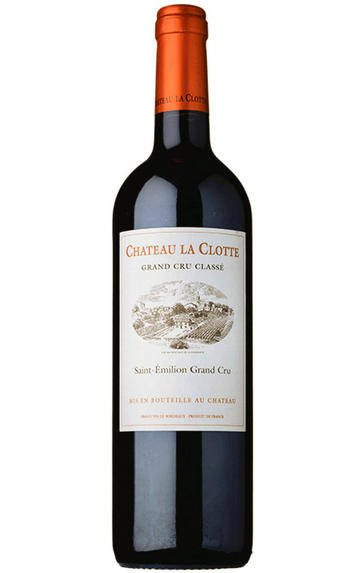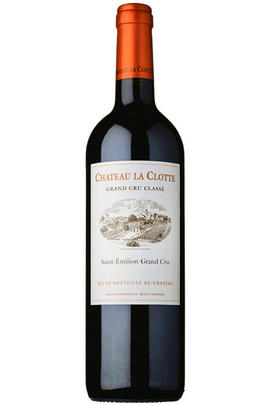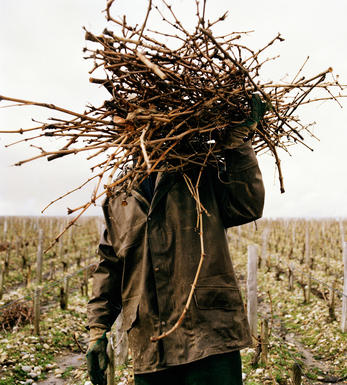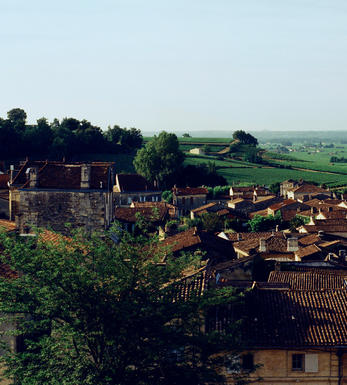
2021 Château la Clotte, St Emilion, Bordeaux

Critics reviews
The 2021 La Clotte was picked on October 2 and 6 for the Merlot and Cabernet Franc, respectively, and matured entirely in new oak. It has a well-defined nose of black cherries and light blueberry fruit, floral as usual, though not as decadent as previous vintages (as expected). The palate is medium-bodied with pliant tannins and good density, though it may just be missing a little amplitude and complexity on the finish at the moment. Fresh, yet you feel it is holding something back. Very correct.
Drink 2026 - 2046
Neal Martin, Vinous.com (May 2022)
The 2021 La Clotte is an attractive, soft wine. Bright red/purplish fruit, gentle spice, a touch of new oak and mocha come together nicely. The 2021 is a pretty, mid-weight La Clotte that will drink well with minimal cellaring. Franc aromatics, such a signature of this wine, aren't quite apparent. La Clotte does its malo in oak, and there is a bit of cooperage that needs to integrate.
Drink 2024 - 2033
Antonio Galloni, Vinous.com (May 2022)
La Clotte is one to watch over the next decade, a true insider's wine that is blossoming under the Ausone team (owners since 2014). This has gorgeous limestone character, sappy, plump but understated rich red fruit character and with spicy, herbal nuances that reveal themselves as it opens in the glass. Harvest October 2 to 6 (over those two separate days because this is just 4ha of vines). Conversion to organic farming since 2020. Old vines, average age 57 years, Thierry Lezin cellar master.
Drink 2026 - 2040
Jane Anson, JaneAnson.com (May 2022)
It's a blend of 85% Merlot and 15% Cabernet Franc from the Vauthier family of Château Ausone.
Aromas of sweet berries, cherries and rose petals, framed by nicely integrated new oak, preface the 2021 La Clotte, a medium to full-bodied, supple and charming wine that's beautifully refined and intensely flavored, concluding with a long, saline finish.
William Kelley, Wine Advocate (April 2022)
Floral-berry notes. Tannins smooth and rounded. Acidity marked but just about enough fruit to match. Plenty of freshness. Clean, dry finish. A leaner version but terroir (limestone) evident.
Drink 2027 - 2036
James Lawther, JancisRobinson.com (May 2022)
85% Merlot and 15% Cabernet Franc.
Medium to full body with a creamy, supple tannin structure. Just-ripe plum fruit and dark berries with a touch of chocolate. Plush, yet so fresh.
James Suckling, JamesSuckling.com (May 2022)
Fragrant blackberries on the nose, some bramble aromas and delicate rose florality. The palate is sharp: you get a real hit of tangy red cherry and raspberry juice. Acidity is to the fore, mouthwatering but with a chalky, mineral edge that softens the attack coming from the limestone terroir. This is lightly-framed and understated in its confidence. The fruit in focus with clarity and precision. Clear with a crisp bite then licks of salinity on the finish. A beautiful effort with plenty of freshness and one to seek out from the same team as Château Ausone.
Drink 2026 - 2040
Georgina Hindle, Decanter.com (April 2022)
About this WINE

Chateau la Clotte

St Émilion
St Émilion is one of Bordeaux's largest producing appellations, producing more wine than Listrac, Moulis, St Estèphe, Pauillac, St Julien and Margaux put together. St Emilion has been producing wine for longer than the Médoc but its lack of accessibility to Bordeaux's port and market-restricted exports to mainland Europe meant the region initially did not enjoy the commercial success that funded the great châteaux of the Left Bank.
St Émilion itself is the prettiest of Bordeaux's wine towns, perched on top of the steep limestone slopes upon which many of the region's finest vineyards are situated. However, more than half of the appellation's vineyards lie on the plain between the town and the Dordogne River on sandy, alluvial soils with a sprinkling of gravel.
Further diversity is added by a small, complex gravel bed to the north-east of the region on the border with Pomerol. Atypically for St Émilion, this allows Cabernet Franc and, to a lesser extent, Cabernet Sauvignon to prosper and defines the personality of the great wines such as Ch. Cheval Blanc.
In the early 1990s there was an explosion of experimentation and evolution, leading to the rise of the garagistes, producers of deeply-concentrated wines made in very small quantities and offered at high prices. The appellation is also surrounded by four satellite appellations, Montagne, Lussac, Puisseguin and St. Georges, which enjoy a family similarity but not the complexity of the best wines.
St Émilion was first officially classified in 1954, and is the most meritocratic classification system in Bordeaux, as it is regularly amended. The most recent revision of the classification was in 2012

Cabernet Sauvignon Blend
Cabernet Sauvignon lends itself particularly well in blends with Merlot. This is actually the archetypal Bordeaux blend, though in different proportions in the sub-regions and sometimes topped up with Cabernet Franc, Malbec, and Petit Verdot.
In the Médoc and Graves the percentage of Cabernet Sauvignon in the blend can range from 95% (Mouton-Rothschild) to as low as 40%. It is particularly suited to the dry, warm, free- draining, gravel-rich soils and is responsible for the redolent cassis characteristics as well as the depth of colour, tannic structure and pronounced acidity of Médoc wines. However 100% Cabernet Sauvignon wines can be slightly hollow-tasting in the middle palate and Merlot with its generous, fleshy fruit flavours acts as a perfect foil by filling in this cavity.
In St-Emilion and Pomerol, the blends are Merlot dominated as Cabernet Sauvignon can struggle to ripen there - when it is included, it adds structure and body to the wine. Sassicaia is the most famous Bordeaux blend in Italy and has spawned many imitations, whereby the blend is now firmly established in the New World and particularly in California and Australia.


Buying options
Add to wishlist
Description
Merlot 85%, Cabernet Franc 15%.
This four-hectare vineyard has been owned by the Vauthier family of Château Ausone since 2014. Conversion to organic viticulture began in 2020. With each vintage the estate moves up a notch in realising the potential of its limestone terroir. The 2021 is slightly tight at first taste, a little lean but with some grip. This evolves splendidly on the second phase, with juicy red fruits and a hint of lavender emerging. This is a very composed wine that feels fully in control, with all the components finely balanced.
Drink 2024 - 2034
Score: 15/20
Berry Bros. & Rudd
wine at a glance
Delivery and quality guarantee